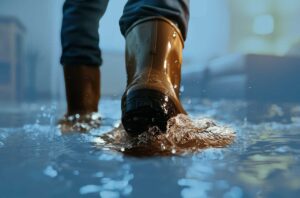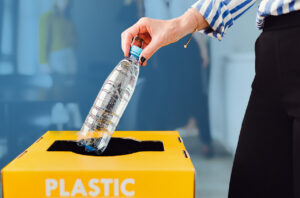Not surprisingly there can be an increased risk of accidents in the autumn and winter months. Leaves falling onto paths can make them wet and slippery increasing the risks of slips and trips, shorter hours of daylight and spells of cold weather bringing snow and ice can also make for trickier conditions.
Recent bad weather has seen storms and flooding in a number of areas all of which contribute to increased risk. Those who work outdoors including driving or operating plant and vehicles may be at particular risk.
All employers have a duty to assess the risks that their employees are exposed to while at work and to put in place reasonable measures to control those risks. Below are some tips to help you prepare for and manage adverse weather conditions.
- Ensure there is suitable lighting around your workplace to enable workers and others to be seen and to be able to see and avoid hazards. For fixed workplaces this may involve making sure that existing lighting is in working order and replacing any faulty bulbs, for mobile workers this may involve ensure they have access to suitable portable lighting.
- Ensure workers have suitable protective clothing for the environment and conditions they will be working in. This could include waterproof jackets, trousers and gloves to keep them dry, hi-visibility clothing to help them be seen, footwear with suitable grip etc.
- Make sure staff have access to suitable welfare facilities e.g. providing somewhere to shelter from the elements, heat food and make warm drinks. You may need to adjust the frequency of breaks for staff who regularly work outdoors.
- Identify and agree a point at which work should stop if conditions are too severe, also identifying what action should be taken in an emergency. Particular attention may need to be given to planning work at height to avoid present a danger.
- Regularly check weather forecasts and follow any advice and severe weather warnings.
- Where strong winds are forecast you may need to make sure any materials stored outside are secure e.g. by weighing down or securing light items that could easily be blown or removing material stored at height.
- Take action to keep floors and surfaces clear of slip hazards. This could include regularly removing fallen leaves, planning to grit paths used by pedestrians when ice is forecast, having mats at building entrances to remove contaminants from shoes and prevent floors from becoming slippery.
- Making sure that employees who drive have received guidance on driving in bad weather conditions.
As an employee you also have a responsibility to take care of your own health and safety and of others affected by your actions. The following tips can help protect you and others.
- Make sure any protective clothing you have been issued with is in good condition and readily available.
- Make sure footwear is in good condition and provides adequate grip.
- When instructed to do so, stop work and move to a place of safety.
- Co-operate with your employer and make full use of any control measures put in place.
- Make sure any equipment you use is suitable for the conditions.
If you have any questions or would like support with managing issues at your workplace, please speak to your usual contact or get in touch using the form below.

50 Years of the HSE and the Health & Safety at Work Act

Building Fire Safety Updated Approved Document B Published

Protecting Properties Against Flooding

The Building Safety Act – Are you meeting your legal responsibilities?

Reasonable adjustments for neurodiverse employees
